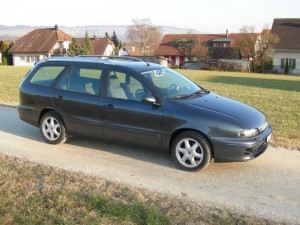
Fiat Barchetta 1995-2002 Workshop Repair & Service Manual (COMPLETE & INFORMATIVE for DIY REPAIR) ☆ ☆ ☆ ☆ ☆
* COMPLETE, Absolutely No Missing Pages!
* Official Service INFORMATION You Can Count On!
* Customer Satisfaction GUARANTEED!
This high QUALITY official manual for Fiat Barchetta 1995-2002 is 100 percents COMPLETE and INTACT, no MISSING, CORRUPT pages, sections to freak you out! This manual is exactly as described. It is in the cross-platform PDF document format so that it works like a charm on all kinds of devices.
FORMAT: PDF
LANGUAGE: English
OS: Windows/Mac/Linux
SIZE: 956 MB
Fiat Barchetta (Type 183) 1995 1996 1997 1998 1999 2000 2001 2002
INSTANT DELIVERY: A download link will be sent to you instantly after payment. Simply click on the link and save it to your computer. You can use this Manual as long as you wish with no restrictions.
CUSTOMER SATISFACTION: If there is ANY kind of problem with the item you purchased, just drop a quick email. Within HOURS the issue shall be taken care of.
PRINTABLE MANUAL WITH DIAGRAMS: Just print the manual out and start to work. You can also use the manual with your Tablet/Laptop in your garage.
REFUND/EXCHANGE POLICY: We sell high QUALITY products only. However if you encounter any problems with the item you purchased, another replacement link will be sent to you. If we’re at fault, you will get 100 percents refund.
Buy ☆THE BEST MANUAL ON THE INTERNET☆ from responsible seller and get instant download now without uncertainty or surprise.
This highly detailed workshop service repair manual for download contains virtually everything you will ever need to repair, maintain, rebuild, refurbish or restore Your Fiat Barchetta 1995-2002 (ALL MODELS ARE COVERED). All diagnostic and repair procedures and gives you access to the same information that professional technicians and mechanics have. You can view and print out the complete repair procedures with this workshop service repair manual Download – you do not need to be skilled with a computer.
EXCERPTS:
Fan activation operating diagram for air conditioned specifications
Low speed fan: comes on when coolant temperature reaches 95°C.
High speed fan: comes on when coolant temperature reaches 100°C: the first fan is activated after the second.
Fan activation is dependent on the status of air conditioning system three-level pressure switch because this determines whether the first fan will come on, followed after a certain delay by the second, and also controls subsequent de-activation.
1. Condition of three-level pressure switch
2. Condition of high speed fan
3. Condition of low speed fan
4. Coolant temperature curve
5. Delay in three-level pressure switch activation/deactivation
ON: fan/pressure switch active
OFF: fan/pressure switch de-active
AIR FLOW METER
The air flow meter is hot-wire type and measures air flow indirectly.
A duct through the top of the meter and parallel to the main flow contains a hot wire.
Part. of the air intake passes into the duct and rejoins the main flow at the other end.
Only a proportion of the air mass flowing through the meter is therefore measured. This
quantity is nevertheless proportional to the overall mass flowing through the meter.
Meter electrical output is there representative of total flow, which is calculated by applying appropriate ratios.
This type of meter offers two advantages over a full flow meter:
– hardly susceptible to air column pulses, particularly common at low speeds with high loads;
– less fouling of the filament due to the reduced mass of air flowing over it. The ECU does not need to clean the wire (burn-in).
LAMBDA PROBE
The lambda probe measures exhaust gas oxygen content. It is fitted on the exhaust pipe upstream of the catalytic converter.
The sensor output signal is sent to the ECU to correct mixture concentration retro-actively (feed-back).
When the probe supplies a low signal (voltage less than 200 mV) the ECU identifies a lean mixture and increases injection time; when the probe signal is high (voltage higher than 800 mV), the ECU identifies a rich mixture and decreases injection time.
This sequence repeats itself at a rate in the order of tens of Hertz to ensure the engine runs on a mixture continually oscillating about stoichiometric levels.
At temperatures less than 300°C the ceramic material is inactive and the probe does not send reliable signals: the probe is fitted with a permanently active electrical heating coil to ensure rapid heating upon start-up and maintain temperature at minimum levels.